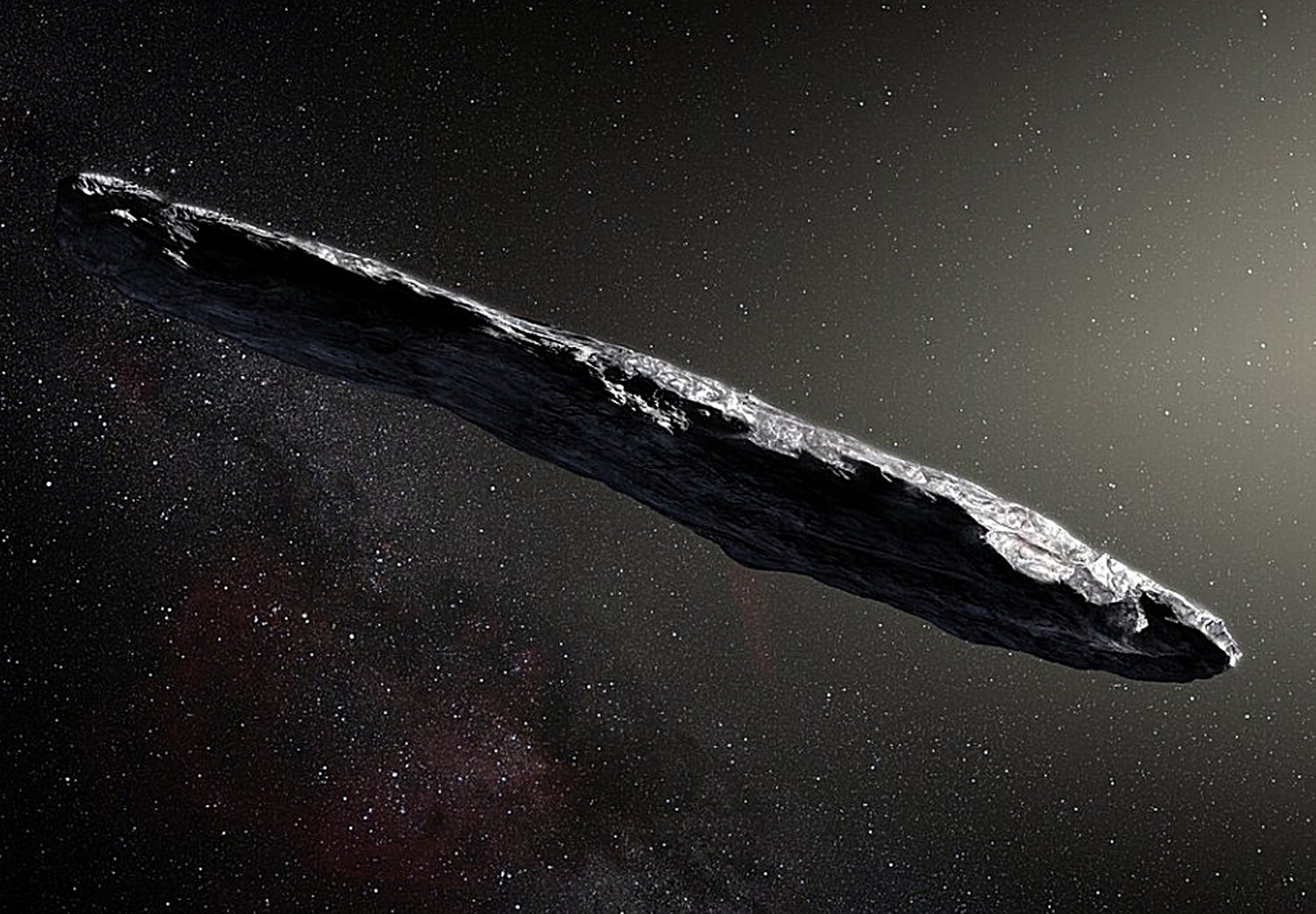Oumuamua: Peculiar, Dark, Reddish Highly-Elongated Interstellar Asteroid Pays Us A Visit

This dark, reddish and highly-elongated interstellar asteroid was revealed by ESO’s Very Large Telescope in Chile.
It’s name is Oumuamua. Oumuamua is indeed unique object, traveling through space for millions of years before its chance encounter with our star system.
For the first time ever astronomers have the possibility to study an asteroid that has entered the Solar System from interstellar space.
Observations from ESO’s Very Large Telescope in Chile and other observatories around the world confirm this visitation. It appears to be a dark, reddish, highly-elongated rocky or high-metal-content object.
“We had to act quickly,” explains team member Olivier Hainaut from ESO in Garching, Germany. “`Oumuamua had already passed its closest point to the Sun and was heading back into interstellar space.”
On 19 October 2017, the Pan-STARRS 1 telescope in Hawai`i picked up a faint point of light moving across the sky. It initially looked like a typical fast-moving small asteroid, but additional observations over the next couple of days allowed its orbit to be computed fairly accurately.
The object was reclassified as an interstellar asteroid and named 1I/2017 U1 (`Oumuamua).
ESO’s Very Large Telescope was immediately called into action to measure the object’s orbit, brightness and colour more accurately than smaller telescopes could achieve. Speed was vital as `Oumuamua was rapidly fading as it headed away from the Sun and past the Earth’s orbit, on its way out of the Solar System. There were more surprises to come.
Astronomers found that Oumuamua varies dramatically in brightness by a factor of ten as it spins on its axis every 7.3 hours.
“This unusually large variation in brightness means that the object is highly elongated: about ten times as long as it is wide, with a complex, convoluted shape,” Karen Meech (Institute for Astronomy, Hawai`i, USA) explains.
“We also found that it has a dark red color, similar to objects in the outer Solar System, and confirmed that it is completely inert, without the faintest hint of dust around it.”
The asteroid’s properties suggest that it is dense, possibly rocky or with high metal content, lacks significant amounts of water or ice, and that its surface is now dark and reddened due to the effects of irradiation from cosmic rays over millions of years. It is estimated to be at least 400 meters long.
Preliminary orbital calculations suggested that the object had come from the approximate direction of the bright star Vega, in the northern constellation of Lyra. However, even travelling at a breakneck speed of about 95 000 kilometres/hour, it took so long for the interstellar object to make the journey to our Solar System that Vega was not near that position when the asteroid was there about 300 000 years ago. `Oumuamua may well have been wandering through the Milky Way, unattached to any star system, for hundreds of millions of years before its chance encounter with the Solar System.
Astronomers estimate that an interstellar asteroid similar to `Oumuamua passes through the inner Solar System about once per year, but they are faint and hard to spot so have been missed until now. It is only recently that survey telescopes, such as Pan-STARRS, are powerful enough to have a chance to discover them.
Observations of this peculiar object continue.
The new results appear in the journal Nature on 20 November 2017.
Research – here



 Creators of mankind
Creators of mankind Description of “Tall white aliens”
Description of “Tall white aliens” Where they came from?
Where they came from? About hostile civilizations
About hostile civilizations The war for the Earth
The war for the Earth “Tall white aliens” about eternal life
“Tall white aliens” about eternal life Video: “Nordic aliens”
Video: “Nordic aliens” Aliens
Aliens Alien encounters
Alien encounters The aliens base
The aliens base UFO
UFO Technology UFO
Technology UFO Underground civilization
Underground civilization Ancient alien artifacts
Ancient alien artifacts Military and UFO
Military and UFO Mysteries and hypotheses
Mysteries and hypotheses Scientific facts
Scientific facts


















